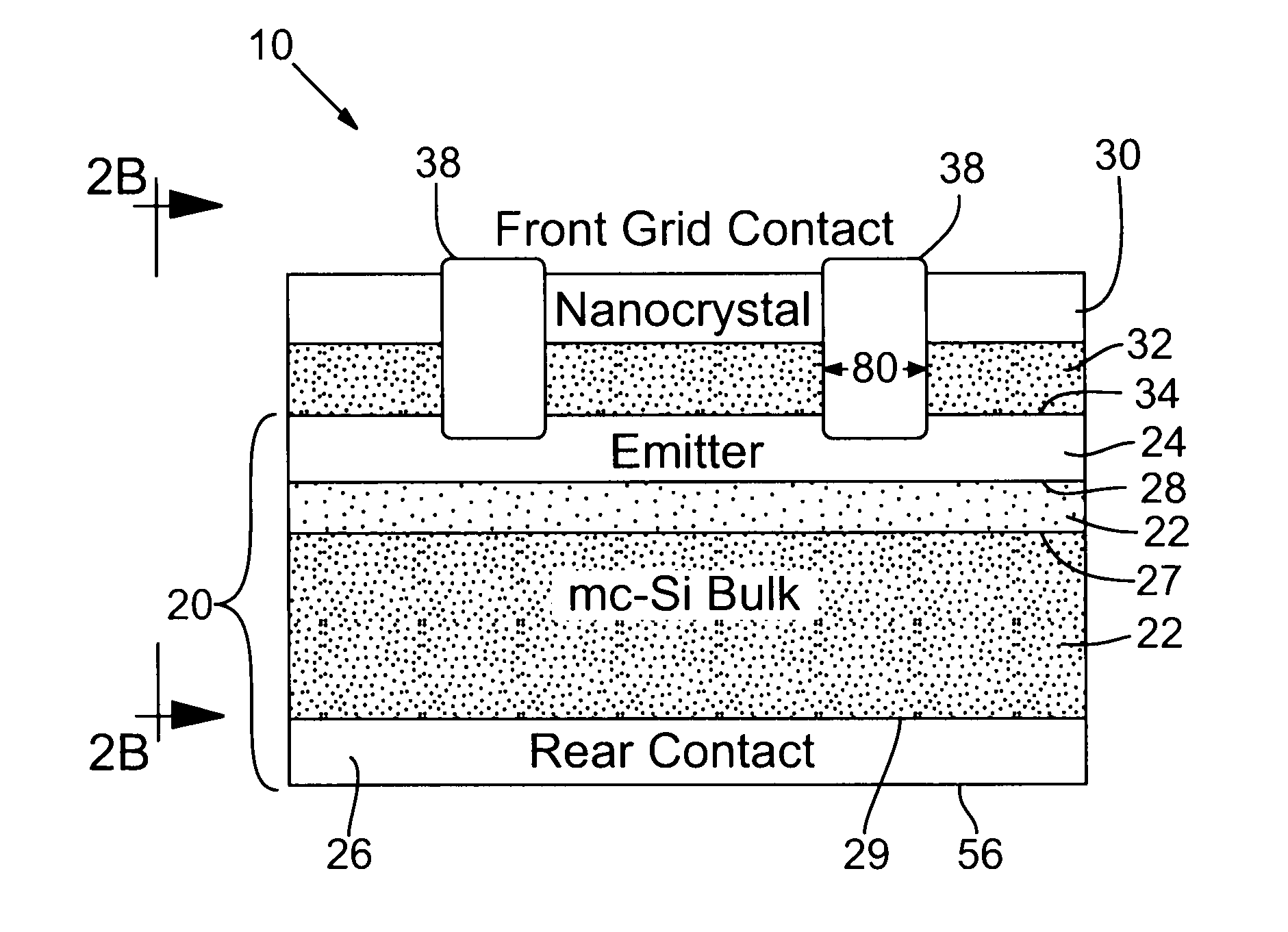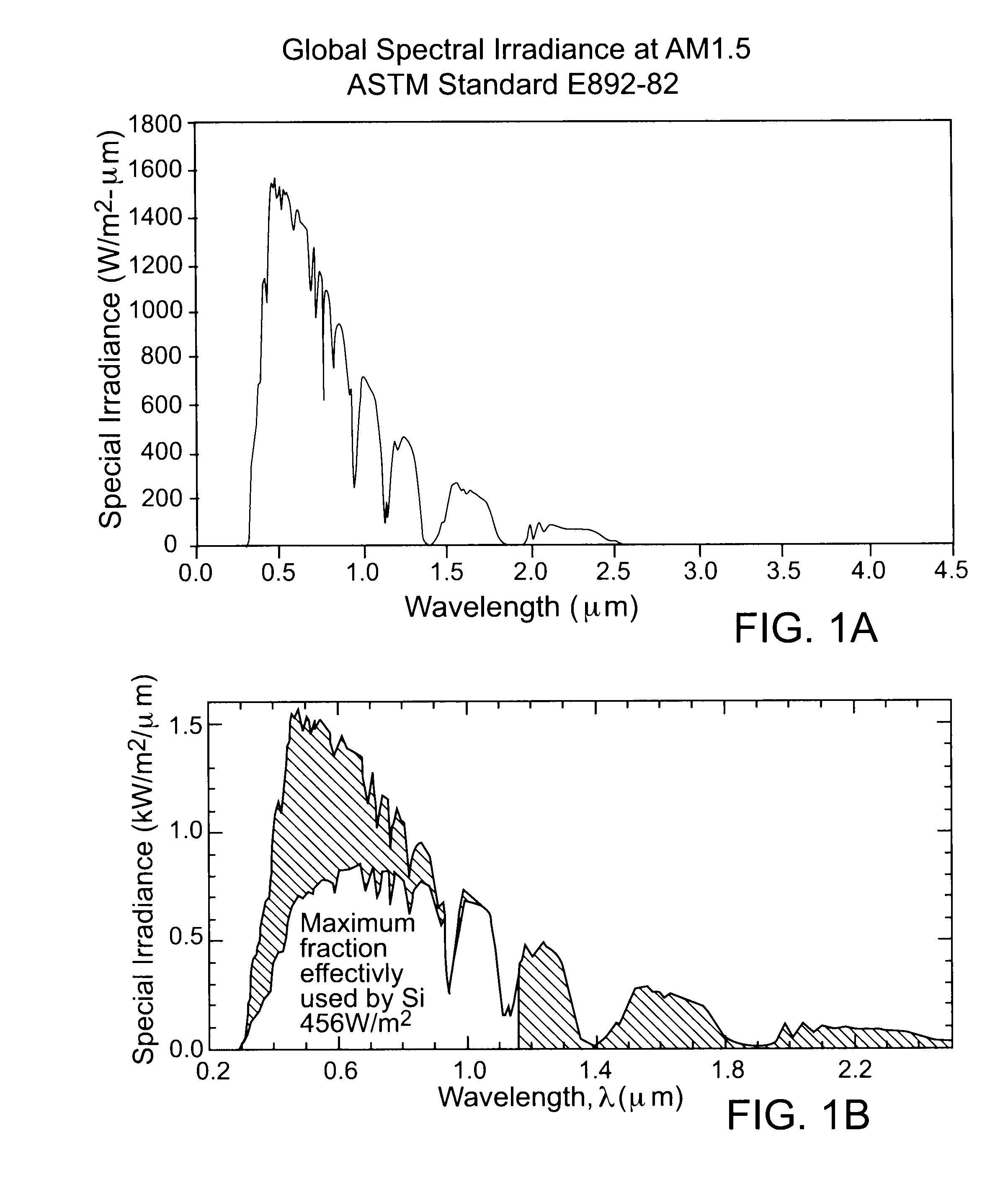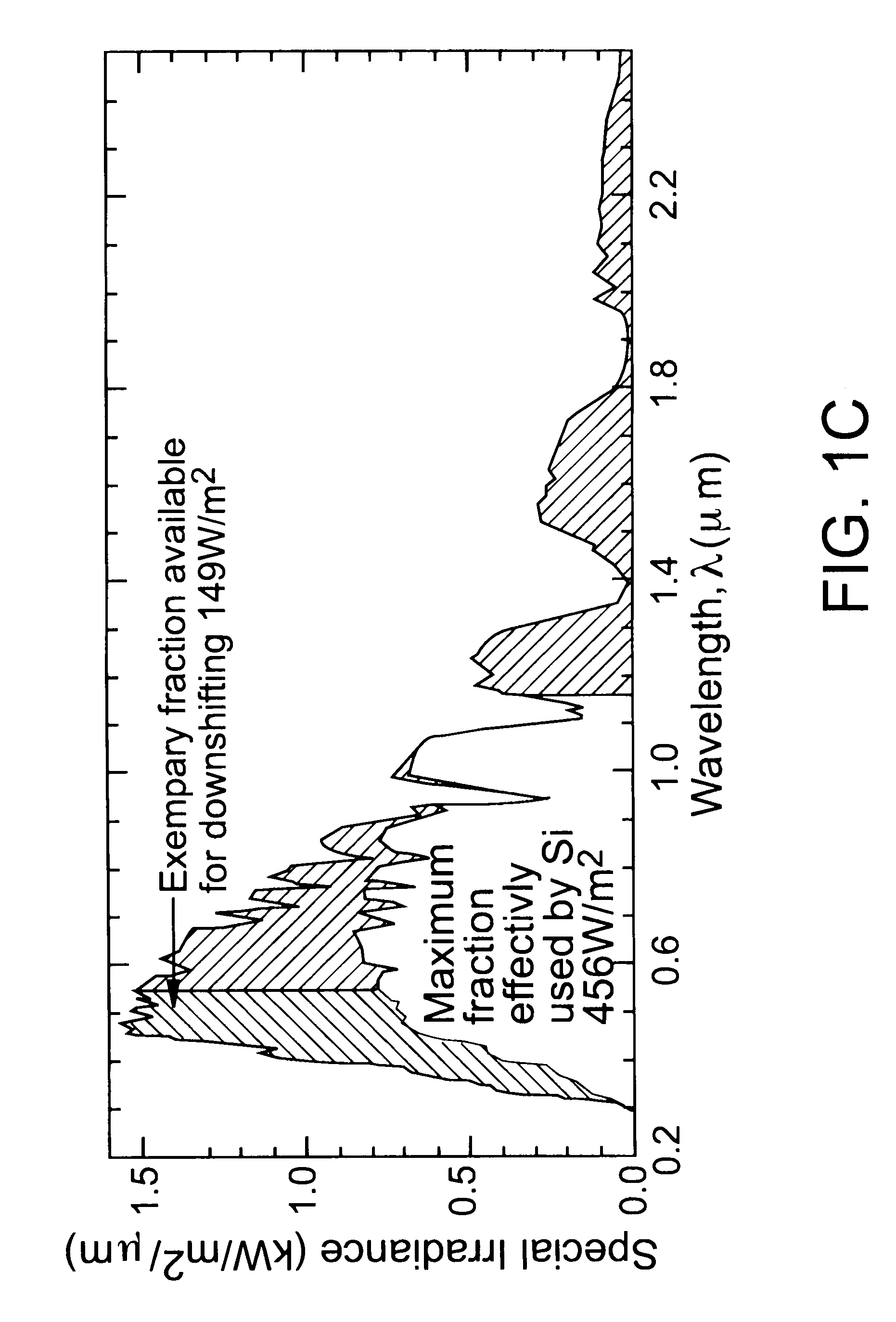Light conversion efficiency-enhanced solar cell fabricated with downshifting nanomaterial
a solar cell and nanomaterial technology, applied in the field of solar cell devices, can solve the problems of high cost of electricity from silicon solar cells, material disadvantages, and high cost of electricity from these solar cells, and achieve the effect of increasing the light conversion efficiency of solar cells
- Summary
- Abstract
- Description
- Claims
- Application Information
AI Technical Summary
Benefits of technology
Problems solved by technology
Method used
Image
Examples
Embodiment Construction
[0039]Within the fixed portion spectral irradiance from the Sun, silicon has a region of light conversion activity from about 0.3 micron to about 1.2 microns due to the 1.1 eV band gap of silicon for absorbing incident photons and generating electron and hole charge carriers, as shown in FIG.1B. For silicon, this region is characterized at least in part by a primary light absorption spectrum from about 0.6 micron to about 1 micron, in which silicon effectively absorbs photons and generates electron and hole charge carriers. FIG. 1B shows, however, that silicon is far less effective at absorbing sunlight in about the 0.2 micron to almost 0.6 micron spectral region. Other photovoltaic materials exhibit areas of the spectral region that are less effective at absorbing sunlight than in their respective primary light absorption spectra.
[0040]For a typical solar cell platform using conventional photovoltaic material and having a limited primary light absorption spectrum, the efficiency of...
PUM
 Login to View More
Login to View More Abstract
Description
Claims
Application Information
 Login to View More
Login to View More - R&D
- Intellectual Property
- Life Sciences
- Materials
- Tech Scout
- Unparalleled Data Quality
- Higher Quality Content
- 60% Fewer Hallucinations
Browse by: Latest US Patents, China's latest patents, Technical Efficacy Thesaurus, Application Domain, Technology Topic, Popular Technical Reports.
© 2025 PatSnap. All rights reserved.Legal|Privacy policy|Modern Slavery Act Transparency Statement|Sitemap|About US| Contact US: help@patsnap.com



